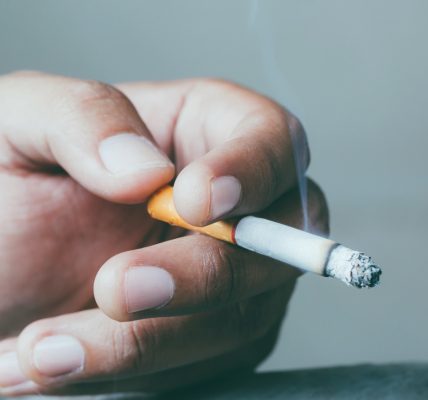The EU Engages in Episodic Future Thinking

Readers of AddictionNews might be familiar with the delightful clinical term for daydreaming, episodic future thinking. The ability to do a guided meditation on one’s own future can have substantial beneficial impacts, including increasing resilience in children and teens, lengthening delay discounting (the amount of time people are willing to wait for a reward), and increasing the reward response toward normal everyday activities.
Episodic future thinking is also behind the beneficial effects of medical journaling, and has been combined with avatars that teach mental resilience through online apps. It turns out that episodic future thinking is also a major tool in business management, although they call it by a different name: scenario planning.
Last week, the European Union Drugs Agency (EUDA) updated three different scenarios for the future of drugs and addiction in the EU. The scenarios project forward to the year 2040 under a series of assumptions. The assumptions are grouped into three different scenarios: things get better, stay the same, or get worse. EUDA refers to these alternatives with the unfortunate monikers:
Scenario 1: EU Harmony
Scenario 2: Barely Managing
Scenario 3: House of Cards
“Scenarios emphasise that the future can be influenced,” EUDA says, and “they invite us to think about ways of achieving desirable outcomes and how to avoid potentially detrimental pathways.” That is a beautiful description of the mechanism of episodic future thinking: focusing on achieving desirable outcomes and avoiding detrimental pathways. Let’s see how it played out.
Scenario 1: EU Harmony
Under this scenario, in 2040, the EU has addiction under control: “[A]ddiction is at an all-time low and causes less harm than ever.” This is achieved, in part, by a decrease in “social inequality,” with the result that people feel better about their lives and less attracted to painkillers. In 2040, EUDA foresees:
[…] general feelings of resentment have mostly subsided, and (most) people have more trust in institutions and no longer consider politics a zero-sum game. This has also facilitated the fight against organised crime, leading to a significant reduction in drug trafficking and drug-related violence.
Yes, in 2040, somehow rising self-esteem will lead to a reduction in drug trafficking and drug violence. It will also result in “rapid and targeted interventions” for drug users. The EU Harmony scenario for 2040 continues:
Innovative treatment and early prevention options have emerged which are constantly adapted to better fit the increasing complexity of needs profiles, and thanks to new technologies, rapid intervention is now possible at an individual level. Not only has this curbed the use of new psychoactive substances (NPS), rates of medicine misuse have also fallen, further supported by an EU-wide rollout of personalised medicine.
Scenario 2: Barely Managing
This EUDA scenario foresees a continuous rise in the cost of living, inadequate healthcare unevenly distributed, and a gloomy outlook for the future of social equity. This leads to no decrease in substance use problems and no significant decrease in the drug supply. Under Scenario 2, in the year 2040, the EU will see:
High-end healthcare, the product of innovative businesses, is available to those who can afford it; others increasingly rely on self-care and self-medication, in particular with regard to mental health issues, and seek relief in a growing black market for prescription drugs.
That sounds bleak. Interestingly, as in the United States, EUDA sees that a patchwork of legalization for a wide variety of drugs is leading to nonstop cross-jurisdictional issues and a growing lack of enforcement of drug laws. They also foresee a reduction in funding for law enforcement, drug treatment, and addiction research. That’s the status quo.
Scenario 3: House of Cards
For some reason, this scenario is called “house of cards” instead of “complete disaster.” House of cards is a metaphor that implies a sudden incident leading to a total collapse. Scenario 3 is more of a gradual erosion in the course of drug usage and addiction treatment than a sudden change. In fact, some might argue this is a description of the present, not 2040:
Health systems are mostly on the verge of collapse and barely functioning, while drug use, driven equally by perceived need and commercialisation, is now rife in all strata of society and addiction appears to be ubiquitous, along with the violence connected to drugs.
The EUDA report lets the cat out of the bag when they reveal that their AI predicts “a new wave of designer drugs” that will require global cooperation to stop. EUDA sees AI taking away the jobs of millions of people, while they suffer, unprotected, through heat waves and pandemics. In 2040, there is little healthcare available or affordable to the majority of Europeans.
I find the EUDA engagement in episodic future thinking to be a complete failure. For one, it fails to keep the eyes on the prize — to keep the focus on improving desirable outcomes and the different scenarios for getting there. Second, this is not even close to a scientific process. There is no effort to weigh the contribution of the various inputs that go into the decision to take drugs or sell drugs. There areno controlled, randomized trials. There’s not even a decent polling of EU experts voicing individual opinions on the subject.
Would better jobs, greater prosperity and less inequality lead to less substance abuse? I’m not sure that’s true. Certainly nothing in the EUDA Forecast for 2040 would lead to that conclusion.
Written by Steve O’Keefe. First published April 30, 2025.
Sources:
“The Future(s) of drugs and the addiction field in the EU by 2040 (Foresights Framework Scenarios),” European Union Drugs Agency (EUDA), April 2025.
Image courtesy of the European Union Drugs Agency (EUDA), used under Fair Use: Commentary.




